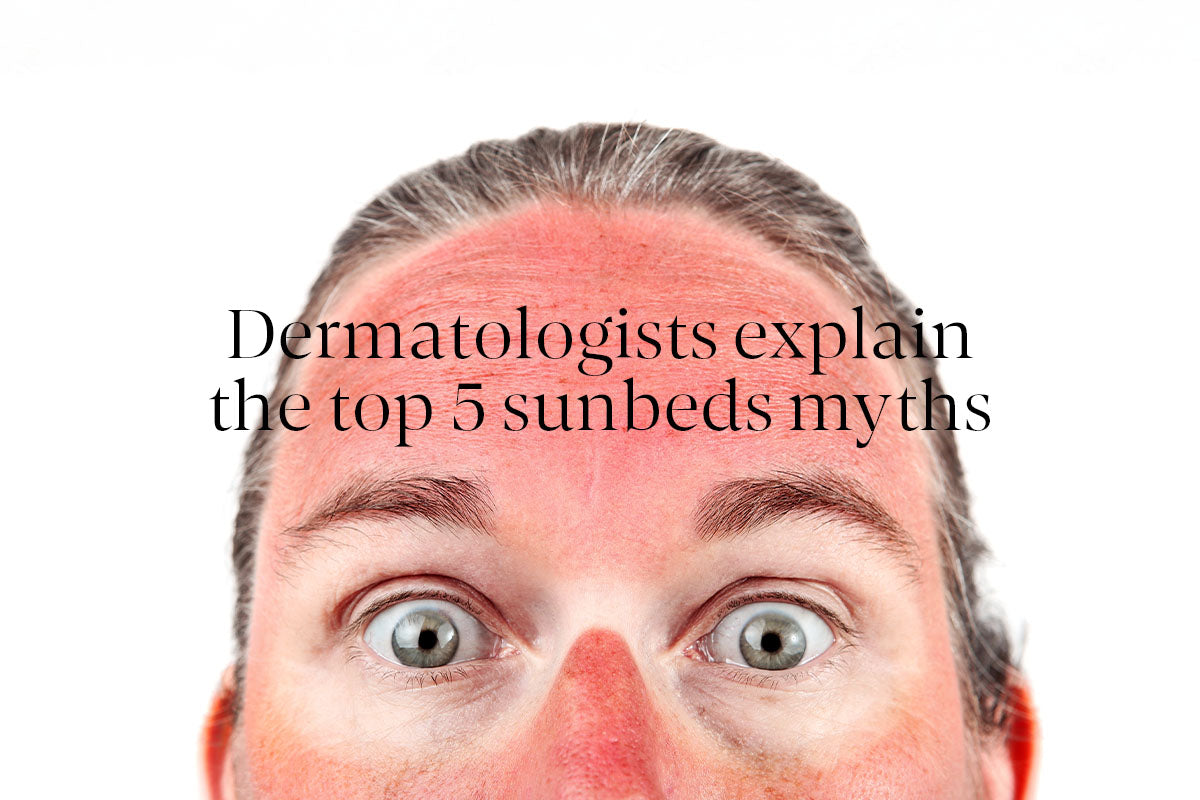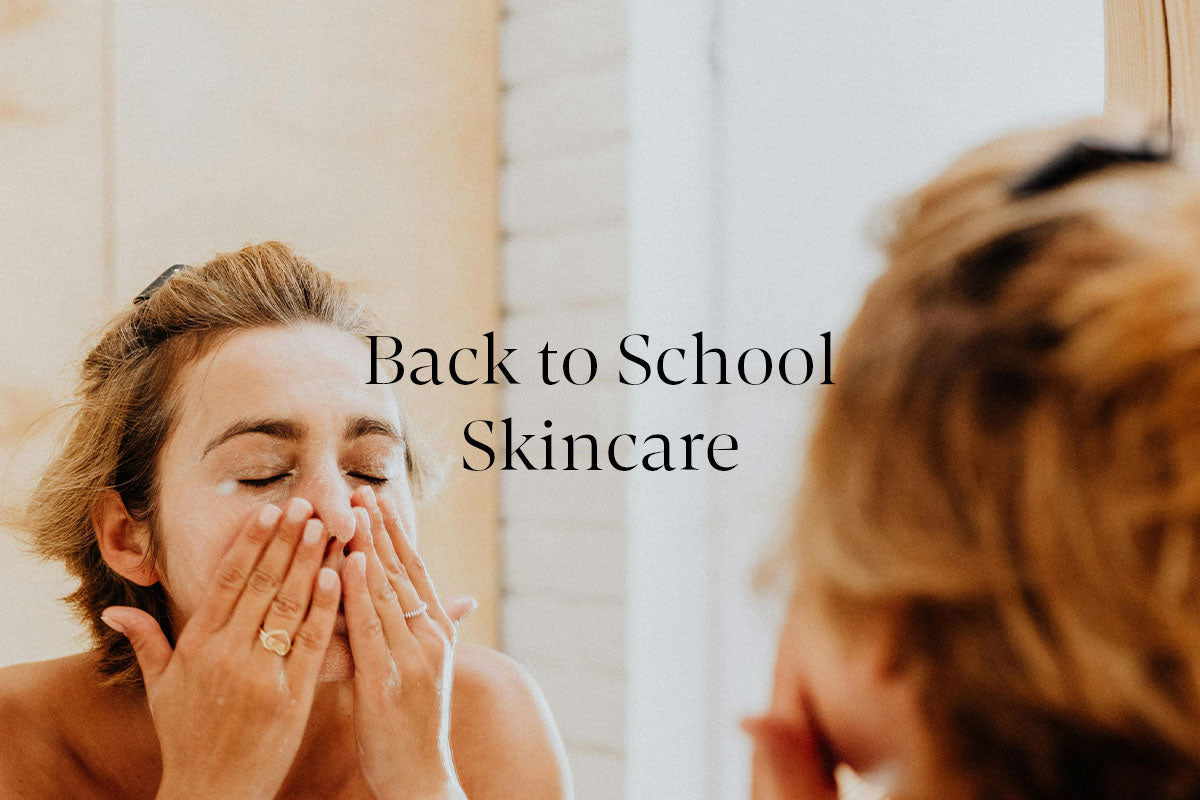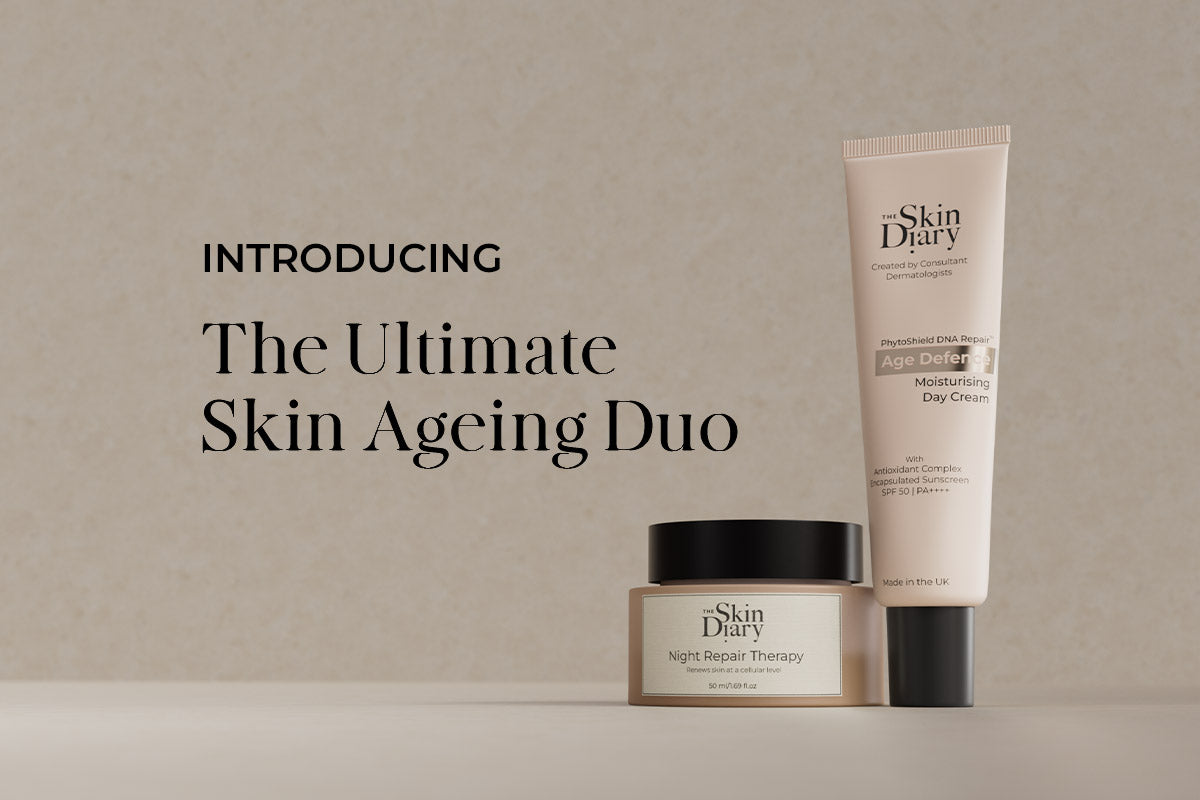Despite many knowing there are risks to using sun beds, with social media showing usage on the increase, it’s clear that many don’t know just how dangerous they can be. As a dermatologist-founded skincare brand, we’re passionate about sun safety, so today we’re debunking myths around sun beds with the information you need to know.
Myth 1: sun beds are safer than the sun
Sun beds are categorically not safer than the sun. With both sun and sunbed exposure, too much UV radiation leads to DNA damage that can cause cancer.
In 2009, sun beds were classed as a ‘group 1 carcinogen’ by the International Agency for Research in Cancer, meaning a strong link was made between sunbed use and cancer risks. Your risk of developing a malignant melanoma increases by 59% if you use a sunbed before the age of 35. If you use a sunbed before 30, this risk increases to a staggering 75% [1].
Unlike sunshine that varies in UV index throughout the year (particularly in the UK and Ireland), sunbeds remain the same; and strong. “People also use sunbeds for the purpose of tanning, therefore they tend to have much more UVA, rather than UVB (which causes burning) compared to natural sunlight. This means that the dose of UVA is particularly and unnaturally high,” says Dr. Beibei Du-Harpur, dermatologist and clinical lecturer. “UVA penetrates deeply into the skin to cause damage to DNA, increase oxidative stress and weakens the scaffolding proteins in our skin that are responsible for healthy, strong skin and a youthful appearance.” Plus, because people don’t realise they are experiencing this damage due to the reduced burn-inducing UVB, many people don’t realise the damage it is causing, and treat it as part of their weekly or monthly beauty routine in a way that they don’t tanning outdoors.
Myth 2: A base tan is safe
There is nothing safe about a tan, including a ‘base’ tan on a sunbed. Many tanning shops promote a base tan as a form of protection, particularly when used in relation to going on holiday. However, this completely ignores that the increase in melanin production is driven by damage to skin’s DNA, which increases your risk of skin cancer and premature ageing.
Myth 3: Tan accelerator lotion or sunscreen makes sunbeds safe

“Sunscreens are a tool that we can use to provide protection from a hazardous exposure - UV as part of general sun protective behaviour. It does not make any sense to intentionally tan (whether that sun beds or on the beach) whilst wearing sunscreen,” Dr. Du-Harpur explains. Another false sense of protection used by the tanning industry is the use of tan accelerators making them a safe option. Tan accelerators work to speed up melanin production to give the skin more of a tan. However, they fundamentally encourage intentional sun exposure, which has detrimental effects on the skin. Tanning brands often tell consumers that not using an accelerator leads to ‘dry skin and collagen and elastin loss’, which is incredibly misleading as 80% of premature ageing (which includes collagen and elastin loss) is caused by UV exposure.
Myth 4: Sunbeds boost vitamin D production
Another tactic used to encourage sunbed use is that they’re good for vitamin D production. Humans aren’t designed to live in a dark room, so getting outside in fresh air is great for us, but we don’t need to bask in the sun or on a sunbed to promote vitamin D production. Incidental sunlight exposure makes enough vitamin D for most people, and because it’s fat-soluble your body stores it effectively. “Your body can make adequate vitamin D, without burning or tanning. If you spend some time outdoors in the spring and summer,” says Dr. Du-Harpur. You can top-up your vitamin D through supplements and diet — all without any risks of cancer.
Myth 5: Sunbeds are good for acne
Another common misconception is that using a tanning bed can help acne and blemish-prone skin. “However, lipid peroxidation, which is thought to be a driver of acne, can actually be driven by UV exposure. Hyperpigmentation is also driven by UV, so it can prolong the appearance of post-acne pigmentation marks,” Dr. Du-Harpur adds.
You may also see a newer way of promoting sunbeds through red light therapy, which can have some anti-inflammatory benefits. Red light is part of the visible light spectrum and is different to UV. If you’d like to explore the benefits of red light therapy for your skin, you can do so without a sunbed. In fact, if you go for a walk in the summer, with sunscreen on, you will be getting red light from the sun whilst filtering out UV!
The bottom line is that sunbeds aren’t safe. They increase your risk of cancer, lead to premature ageing and can exacerbate skin concerns. The safest tan is a bottled, sunless one. The great news is that there are some fantastic self-tanners around.
References:
[1] https://news.cancerresearchuk.org/2012/07/27/sunbeds-cause-skin-cancer-the-evidence-is-clear)/





